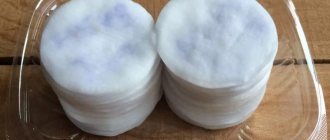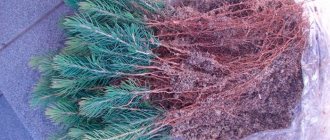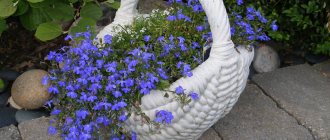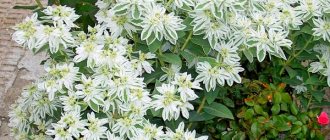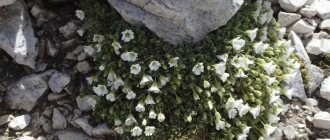There are flowers that are not easy to grow from seeds.
But it is all the more interesting for amateur flower growers to grow such plants. Clematis are difficult crops to grow. We share tips on how to grow this beautifully flowering vine from a seed. It is troublesome and difficult to grow clematis from seed material for planting in open ground. But this has never stopped flower growers who are in love with clematis. And you can grow a vine, the main thing is to know the secrets of this process.
We recommend studying: how to properly dry and store oregano at home so that it remains useful?
Why is it difficult to grow a liana from seeds?
Breeders have developed a variety of species and varieties of clematis. Seeds of some varieties sprout in three weeks, while seedlings of other types have to wait six months. Same with flowering. In some species, flowers bloom in the year of planting, and in some varieties you have to wait three years to see flowering.
Seeds vary in size among all species and varieties. The smaller the seeds, the faster the seedlings appear, and flowering begins in six months or a year.
Collecting seeds from flowering clematis is easy. Germination depends on storage time. The longer the seeds are stored, the lower the germination rate. It is generally not worth planting for longer than 8-9 months of storage. You can spend your efforts, but they will be in vain.
If you are new to floriculture, then you should try sowing from small seeds.
Support
In order for clematis pungent to develop normally, bloom for a long time and profusely, it needs support. It is desirable that it be not only practical and convenient for the bush, but also beautiful. Sometimes weigela, forsythia or mock orange bushes serve as support for clematis. The shoots cling to them, stretch upward, hang freely, and by mid-summer the bushes are completely hidden under magnificent flowers. An arch or screen can be an excellent support for clematis.
Which variety to choose
If you are planning to start growing clematis from seeds, then there are varieties that are a little easier to grow than others.
These include:
- Manchurian variety. Clematis of this variety are more like bushes rather than vines. Caring for the plant is easy. After the seedlings take root in a new place, there are no problems with clematis.
- Variety "Arabella". The plant blooms from mid-May to September. The flowers are large (up to 10 cm), their color is violet-gray. Closer to autumn, the flowers become bluish. Arabella is low maintenance.
- Variety "Blue Light". The flowers of this clematis are double, colored bluish-lilac. The vine itself can grow up to 2 meters in height. The plant blooms twice per season.
- Another variety with large lilac-blue flowers: “Blue Explosion”. Clematis shoots reach three meters. This beautiful liana blooms twice a season.
- Variety "Westerplatte". This clematis has earned the love of many gardeners. The plant grows up to 2 meters, the flowers are large and red. Clematis does not require care.
- A special variety “Helios”, its seeds are sold only in specialized stores. An adult vine reaches a height of 3 meters. For two months, from June to August, clematis is decorated with these interesting flowers:
- The “Long Fire” variety with huge, up to 15 cm, crimson flowers adorns a vine that grows up to 1.7 m. It blooms once per season. But the flowering is so lush that the leaves are practically invisible due to the flowers.
Description of the flower and its features
Clematis are divided according to life forms: herbaceous, semi-shrub and shrubby, according to size: small-flowered with a flower size from 2 to 5 centimeters. and large-flowered with a flower size of up to 15 centimeters. They are very diverse in the shape and appearance of the petals: stars, double, three-petal, four-petal and tulip-shaped.
Small-flowered clematis include: Tunguska, Alpine, Virginia, Chinese; they are very unpretentious, drought-resistant and frost-resistant plants. Large-flowered clematis include: “Jacmana”, “Viticella”, “Langunosa”, “Taxensis”.
First shoots of clematis. Photo used as illustration. Source: Yandex.Images
The color range of clematis is striking in its richness and unusualness, which makes it possible to distinguish them by variety.
- Varieties have white flowers : “Warsaw”, “Polar Star”, “Ballerina”, “Madame Andre”, “Seagull”, “Hildy”.
- Blue - “Ramona”, “Lavsoniana”, “Klavdiya Shulzhenko”.
- Blue – “Turquoise”, “Sea Splashes”.
- Blue with a purple tint - “Souvenir”, “Talisman”, “Stone Flower”, “Riddle”, “Memory of the Heart”.
- Violet and lilac - “Forest Opera”, “Ideal”, “Fantasy”, “Victoria”.
- Red, crimson, purple - “Cosmic Melody”, “Dawn”, “Alexandrite”, “Nikolai Rubtsov”.
- Pink – “Tenderness” and others.
- Two-color – “Nadezhda”, “Barbara Dibley”.
- White-yellow, greenish-yellow - “Tangutika”, “Tangutsky”.
The most popular vines in flower gardens are clematis. With proper care, they can grow in one place for 15 to 20 years .
Preparing seeds for sowing
After flowering, seeds begin to form in the ovary boxes. You can tell that they are ripe by their white fluffy balls. When ripe, the seeds open and the fibers and seeds are visible.
To grow clematis from seeds, you need to approach the preparation of seed material responsibly. When collecting seeds yourself, it is important to follow the rules:
- Procurement of seed material for clematis varieties occurs in different months of the year. It is necessary to take into account the characteristics of the growing vine. In addition, completely different seeds can form on the same clematis, differing in both shape and size. Therefore, you will also need to sort them. You need to select seeds that are completely free of defects and only the largest ones.
- The second stage of seed preparation is stratification. It definitely needs to be done. This will increase the germination of seeds and also contribute to the formation of immunity in the seed to fungi and bacteria.
- What should be done during stratification? When seeds are sown in a substrate in the spring, they must be stored properly in winter. The seed should be kept in a dark basement throughout the winter months with a temperature no higher than +6°C. If sowing is planned in the fall, then the seeds are stored in the refrigerator for 15 days before planting.
- The next stage of preparation for sowing is bubbling. Increases germination and saturates seeds with microelements. To do this, pour 250 ml of water into a container and dissolve 1 tsp in it. baking soda. We place the seeds in the container and use a regular aquarium compressor to perform bubbling. This process helps soften the dense shell of the seed. The compressor should work for 5-6 hours. Then we replace the solution with a new one, and turn on the compressor again for 5-6 hours. The procedure must be carried out 4 times.
Seed material germinates in different species with an impressive spread in time: from 3 to 25 weeks. If the seeds are treated as described above, the timing of seedling emergence will be significantly reduced. For example, if clematis seeds germinate without preparation for 2.5 months, then after stratification and bubbling they will germinate in 30 days.
Growth stimulants also help speed up germination. For example, Epin or Zircon. The instructions for the medications indicate the required dosage.
Planting seeds without stratification
Clematis, which has small and medium-sized seeds, is grown in this way:
- Place the prepared substrate in a container or container with drainage holes. It consists of sand, garden soil and peat in equal quantities.
- In the container, the height of the soil layer should be 5-6 cm. After laying the substrate, it must be watered.
- We place clematis seeds according to a 5x5 cm pattern. Planting depth depends on the variety.
- Cover the soil with film or glass. The container should be kept warm (25-30°C).
- Every day it is necessary to ventilate future seedlings and, if necessary, moisten the substrate using a sprayer.
Shoots may appear in three weeks.
We recommend studying: when to plant Mallow seeds for its successful cultivation?
Reproduction
Most often, short-tailed clematis is grown from seeds, but it is also easily propagated by rooted layering and green cuttings. Cuttings are cut in June-July and rooted in a light sandy substrate in a greenhouse. They say that there are no difficulties with rooting.
It is recommended to sow the seeds in November: in this case, seedlings will begin to appear in February. The emergence of seedlings is spread over several months. Plants are transferred to a greenhouse or to a permanent place after the appearance of several true leaves. They write on the forums that they tolerate summer transshipment well.
Growing clematis with double stratification
This method is needed for large seeds and some varieties with small planting material.
- Seeds are sown as when sowing without stratification. They should stand for two weeks at a temperature of +16-20°C.
- Then the temperature drops to +7°C. Two-stage stratification should last at least 1.5 months.
- Every week you need to check the humidity of the substrate.
After this, the container is placed in a bright and warm place: up to +20°C. As it dries, the soil is moistened and seedlings are expected.
Planting seeds for seedlings
Seeds are planted in spring and September. In spring, clematis seed material is sown immediately into prepared soil. And they begin to plant seedlings for spring in the fall.
How to prepare soil for planting seedlings?
The fertilized soil mixture consists of the following ingredients:
- humus;
- river sand;
- garden soil;
- wood ash.
Advice! The seeds are sprinkled with sand on top. This will make it easier for the seed to hatch. There is no need to compact the soil after sowing!
Small seeds and large ones that have undergone stratification are sown in the soil in the spring under a film. Time wise it is March or April. Flower growers have noticed that seeds germinate faster outdoors than at home.
At the end of September, large seeds are sown in the soil, without stratification. Shoots will appear in the spring, when the daytime temperature reaches +16-18°C.
When purchasing seeds in a store, pay attention to planting dates. They are indicated on the bags.
When to plant clematis: autumn or spring
If you want to hear a short answer - of course, spring is a more suitable season for planting clematis, at least simply because planting seedlings in spring is more convenient and practical.
However, there are several nuances here. For example, seedlings with an open root system should be planted exclusively in the spring, but cuttings with a closed root system can be planted even in the summer. However, doing this in the spring will be easier in any case.
Planting clematis in spring - the best time
The most suitable time of year for planting clematis is, of course, spring. However, which months to choose. If you have standard weather conditions, then, of course, late April or early May is best. However, our country is incredibly huge, and advice suitable for the southern strip can easily ruin the planting of clematis in the northern strip.
So there is simply no universally ideal date. However, you can list dates that are suitable for a particular band.
For example, in the south, clematis can be planted as early as early April. In the middle zone, the most suitable dates will be the dates indicated above - the end of April, the beginning of May. In the north, clematis planted at the beginning, or maximum in mid-May, will perform best.
Growing clematis sprouts at home
When you wait for the shoots to appear, the container with them should be moved to a bright place, for example, a windowsill. If there is a greenhouse on the site, then it must be taken there.
Further care consists only of spraying the substrate. You cannot loosen the soil; you can disturb the remaining seeds that are trying to hatch.
Flower growers have divided opinions about the timing of picking. Some of them believe that it is necessary to dive when the seedling has 6 leaves with cotyledons. Others advise diving when two true leaves appear. Argument: it is more difficult for sprouts to adapt to new conditions at a more “adult” age.
When transplanting into a container, the distance between seedlings is up to 20 cm. If picking is done in separate pots, then their height is no more than 10 cm. The sprout should be deepened by 3-4 cm.
When the seedlings have appeared before they are transplanted outside, they need to be fed. Fertilizers are applied once every week and a half, for example, Agricol, and other fertilizers for seedlings.
Seedling care, picking
The soil in the boxes is moistened as it dries and loosened. Young clematis are shaded from direct sunlight and thinned out as individual shoots wither. After 4 leaves appear, a pick is organized, i.e. seated in plastic cups or peat pots. A larger planting box can be used as a container. When picking into it, it should be taken into account that the distance between the sprouts should be about 10-15 cm.
Clematis shoots
Young rhizomes should be dug up with special care, since vegetative processes in the plant depend on their preservation. A mixture of equal parts of peat, black soil and sand is used as soil. If possible, seedlings in peat pots are buried in the garden. Cultivation of clematis in late spring in the northern regions of the country is carried out in greenhouses, greenhouses or well-ventilated verandas.
Planting seedlings in the ground
Sprouts with 8 leaves are planted in open ground. If it is spring, then you need to wait until the spring frosts pass. For autumn planting, this is September.
The site must be chosen to be sunny, without drafts or gusts of wind. Since clematis are usually planted near houses and gazebos, you need to step back half a meter from the wall. If several seedlings are planted in a row, the distance between them is set as follows:
- for large varieties, the indentation is 4 meters;
- for small vines (up to 2 meters in length) the indentation is 2 meters.
Clematis like their base to be in the shade. Therefore, you need to plant perennial plants: daisies, forget-me-nots, Iberis, sedum.
Landing:
- The hole in the ground should be equal to the height of the pot plus another 50 cm.
- A 10 cm drainage layer is placed at the bottom of the hole. You can use expanded clay, shell rock, and pieces of brick.
- 30 cm of fertilized soil is added on top. It consists of earth taken out of the pit and mixed with potassium (1.5 tbsp), superphosphate (1 tbsp) and humus.
- The hole is filled with water.
- After the water has been absorbed, a stake is driven into the center to then tie up the growing vine.
- Together with a large lump, the seedling is removed from the pot. It must be installed next to the stake. It must be buried to a depth of 6-8 cm.
- The seedling is sprinkled with soil, watered with water and covered with mulch.
Important! Above the second pair of leaves you need to pinch for branching.
Further care is simple: water, feed one more time with complex fertilizer and tie up.
This is how you can grow clematis from seeds.
We recommend studying: tips for properly growing and caring for Goji berries in your dacha

